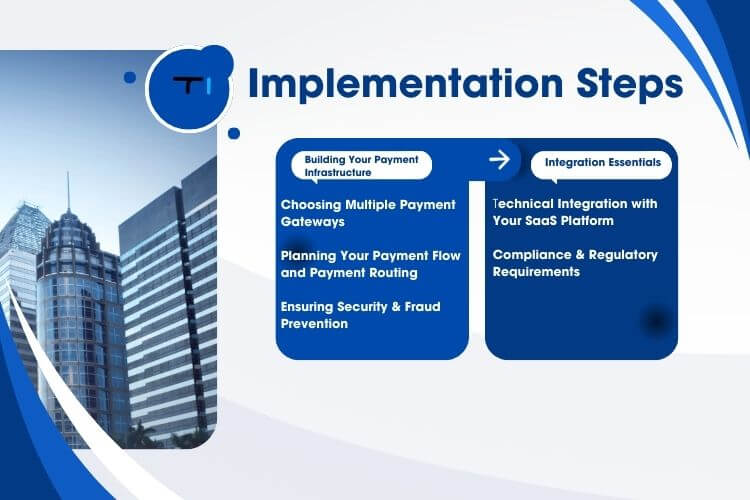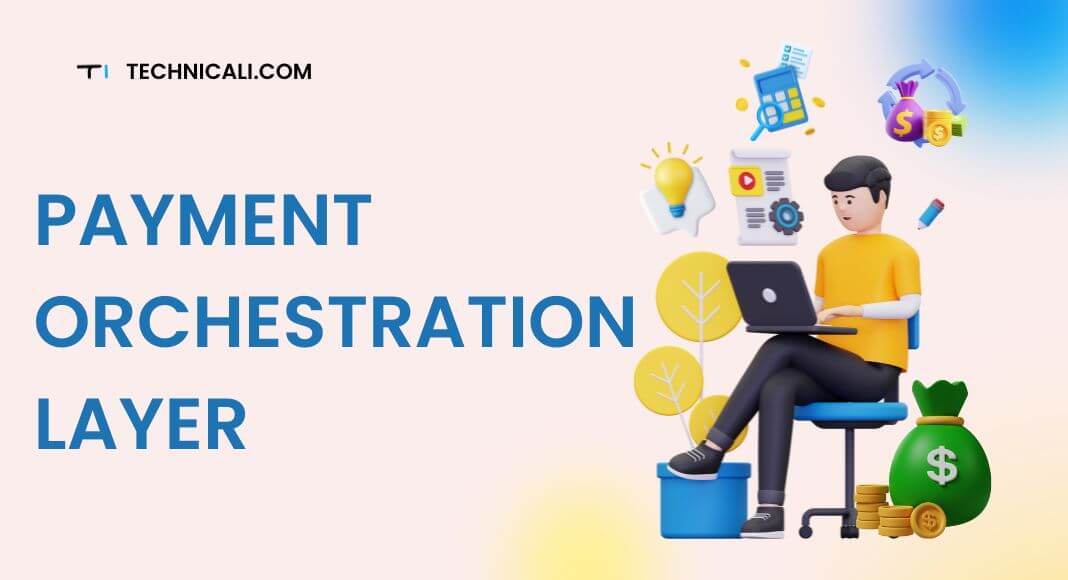A payment revolution is underway, driven by payment orchestration strategies that simplify the payment process for modern SaaS ecosystems. By embracing an orchestration layer, startups and established businesses can learn about payment orchestration features such as multi-acquirer routing, failover, and stress-free integration. This guide explores every angle of implementing a payment orchestration layer, illuminating how these solutions enable SaaS payment models to accept payments efficiently while catering to customer payment preferences around the globe.
Contents
- 1 Understanding the Payment Orchestration Layer for SaaS
- 2 Benefits of Using a Payment Orchestration Platform for Startups
- 3 Implementation Steps: How to Start Accepting Payments with a Payment Orchestration Layer
- 4 Challenges Associated with Payment Orchestration
- 5 Real-World Insights and Data
- 6 Conclusion & Next Steps
Understanding the Payment Orchestration Layer for SaaS
The Evolution of the Payment Process
The payment landscape has evolved far beyond the days of a single payment approach. In today’s environment, SaaS businesses must navigate numerous payment method options, multiple currencies, and a wide range of regulations.
What Is Payment Orchestration?
It is a centralized payment orchestration platform that coordinates every step of the payment lifecycle under one digital roof. This orchestration layer manages transactions, monitors fraud, and makes the reconciliation of payments easy and smooth while providing details in real-time dashboards. The most important use of a payment orchestration layer is to enable SaaS organizations to accept online payments and customize every payment experience for a region or market segment.
Traditional Payment Gateways vs. Payment Orchestration Layer
Traditionally, this will require every business to have integrated each of its payment gateways separately. Such integration tends to lead to siloed data and non-cohesive user experiences. However, the advanced model of payment orchestration brings POL vs traditional gateways to the table, thus consolidating all payment service providers into one layer. That helps reduce friction in finance teams and provides a unified view of every transaction.
Payment Orchestration Layer Enables Efficiency and Flexibility
Rapid scaling and seamless integration are top priorities for forward-thinking SaaS executives. An orchestration layer simplifies these concerns.
Key Components of a Payment Orchestration Platform
- Payment Routing and multi-acquirer logic: Distributes transaction attempts across various acquirers for more tremendous authorization success.
- Failover Mechanisms: Automatically re-route payment transactions to alternative acquirers if one path experiences downtime or delays, thus reducing payment failure.
- Integration Strategies: By handling different payment service providers in a single framework, you can quickly deploy alternative payment methods and scale globally.
How Does Payment Orchestration Work?
An orchestration platform works by integrating and handling different payment gateways, supporting subscription billing, refunds, and real-time fraud analysis through payment operations. A robust payment orchestration provider (sometimes called a payment orchestrator) centralizes these tasks so you can improve payment strategies without juggling numerous vendor portals. Essentially, payment orchestration allows a startup or large enterprise to unify processes, glean better insights, and enhance the payment experience for customers.
Benefits of Using a Payment Orchestration Platform for Startups

Why Startups Are Adopting Payment Orchestration Layer
Have you ever wondered why a startup might rush to implement a payment orchestration layer so early in its SaaS platform development? The advantages speak for themselves:
Scalability & Global Reach
Recent data indicates that the global payment orchestration platform market is supposed to expand steadily, offering different avenues of payment, from local cards to alternative payment methods. A robust infrastructure with such a system makes it easier for you to adapt to payment methods and currency across continents, thus helping in serving international customers with ease and being productive in changing payment preferences.
Enhanced Fraud Protection & Security
Payment data centralized in a secure hub offers real-time anomaly or suspicious pattern monitoring of transactions. Additionally, having everything go through a payment orchestration platform makes it easier to abide by global payment regulations. The frictionless payment experience goes all the way to preventing fraudulent activities even before they occur.
Seamless Payment Experience
Seamless payment experiences are likely to cause cart abandonment significantly. Offering SaaS companies the opportunity for integrated payment orchestration layers enables the delivery of the simplest payment experiences with a built-in sense of trust, increasing conversions.
Pricing Considerations for SaaS Payment
The question of pricing often looms large for SaaS payment ventures.
Spreedly Pricing for Startups
Spreedly, a well-known payment orchestration provider, offers transparent pricing tiers – an approach many SaaS businesses evaluate against their growth projections. Comparing these pricing models and calculating ROI can guide you in implementing the right orchestration layer for your specific needs.
Budget-Friendly Tactics
- Failover Routing Payment Systems: Leverage failover routing to curb payment failure rates, mitigating lost revenue.
- Minimize Overheads: Automate tasks; like refunds or post-transaction notifications – via an automated payment flow. Reducing manual labor yields immediate cost savings.
Implementation Steps: How to Start Accepting Payments with a Payment Orchestration Layer

Building Your Payment Infrastructure
Constructing a robust payment infrastructure is vital to start accepting payments at scale.
Choosing Multiple Payment Gateways
Diversifying gateways means that you are not dependent on one vendor’s uptime. Engaging multiple payment gateways also unlocks different local payment options, catering to region-specific demands. Though it feels intimidating to add more integrations, having various payment service providers captures every revenue opportunity for you.
Planning Your Payment Flow and Payment Routing
Defining a structured payment flow is the first step to ensuring that every transaction runs smoothly. A well-tuned payment routing configuration ensures failed payments are immediately retried through alternate paths. This safeguard elevates user satisfaction and preserves revenue.
Ensuring Security & Fraud Prevention
Proactive defensive measures consist of advanced payment processing, for instance, reconciliation and payment data centralization that ensures clear audit trails. By analyzing real-time payment details, you can quickly isolate anomalies in the payment system and patch security holes before they escalate.
Integration Essentials
Sometimes, the biggest hurdle is weaving the orchestration layer into existing workflows.
Technical Integration with Your SaaS Platform
Whether using microservices or a monolithic architecture, integration with a payment orchestration platform should follow a well-documented sequence. Emphasize handling different payment service providers so your system can readily accommodate multiple payment methods and future new payment expansions.
Compliance & Regulatory Requirements
Meeting PCI-DSS, GDPR, and other international mandates is non-negotiable. By partnering with a payment service provider that offers regionally vetted solutions for online payment, you diminish compliance hurdles and protect both your brand and users.
Challenges Associated with Payment Orchestration
Common Pitfalls & How to Avoid Them
Despite the clear advantages, let’s address the challenges associated with payment orchestration head-on.
Complex Payment Setups
A complex payment arrangement might overwhelm teams if not adequately planned. However, an orchestration layer simplifies these complexities through a single dashboard and uniform processes.
Integration Hurdles
Even robust solutions may struggle with payment processor compatibility, especially when dealing with various payment service providers. Remember that the payment orchestration layer enables advanced features such as dynamic routing, which might require extra development or plugin installations.
Maintaining a White Label Payment Experience
Many SaaS organizations desire a white-label payment journey that looks and feels native to their platform. Balancing consistent branding with the best practices of SaaS platform design demands thoughtful integration to ensure a frictionless payment experience.
Overcoming Payment Failure & Fraud
Because payment failure and fraud are persistent threats, your approach to risk management matters.
Payment Orchestration Work for Fail-Safe Transactions
The concept of payment orchestration work involves using failover routing to re-route payment transactions when an acquirer is unresponsive. By distributing attempts across multiple providers, you enhance authorization rates and safeguard revenue streams.
Managing Risk & Avoiding Chargebacks
Real-time alerts, predictive analytics, and close partnerships with your orchestration provider help mitigate chargebacks before they escalate. Deploying advanced payment processor solutions can slash incident response times and reinforce trust among your user base.
Real-World Insights and Data

Fast-Growing Global Payment Orchestration Platform Market
A world with a payment solution that seamlessly bridges geographies and currencies is no longer a distant vision. In fact, the platform collects and analyses transaction trends, demonstrating that the global payment orchestration platform market could see annual growth rates exceeding with a CAGR of nearly 19.5% between 2024 and 2032 over the next few years, according to select industry reports.
Market Size & Growth Statistics An orchestration – principled payment solution connects consumers and merchants fluidly, frictionlessly expanding their business into other regions.
Steady advancements in payment solutions reflect evolving consumer demands, making now the perfect time to invest in robust payment orchestration strategies.
Conclusion & Next Steps
Building a Future-Proof Payment Infrastructure
Constructing a durable ecosystem for payment orchestration pays dividends in user satisfaction and operational efficiency.
Embrace Multiple Payment Methods
You can reach different customers with varied payment preferences in different regions by integrating different forms of payment. Strengthening your payment infrastructure from the outset shields you against disruptions and encourages long-term scalability.
Choosing the Right Payment Orchestration Provider
When assessing a payment orchestrator, verify that pricing, integration complexity, and payment services meet your specific use cases. This diligence ensures you can confidently accept payments worldwide while safeguarding your bottom line.
Final Thoughts
Encourage your network or fellow executives to discuss best practices, share experiences, or pose queries.
Implement these strategies now to fortify your SaaS environment with a robust, future-ready payment orchestration layer. As you do, watch your revenue streams grow more stable and your brand image flourishes; both key indicators of success in the competitive digital payments sphere.


